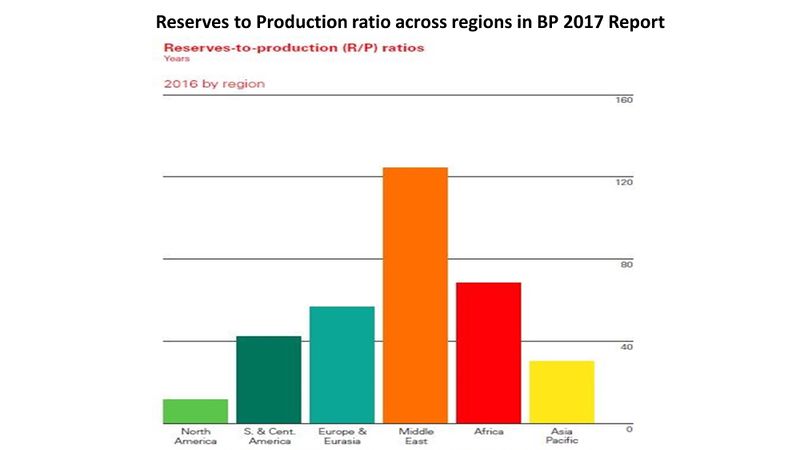Difference between revisions of "Group2 Proposal"
| (5 intermediate revisions by the same user not shown) | |||
| Line 34: | Line 34: | ||
|- | |- | ||
| <div style="font-family:Century Gothic; border-radius: 1px "> | | <div style="font-family:Century Gothic; border-radius: 1px "> | ||
| − | + | ||
Properly functioning markets for electricity, natural gas, oil and pollution allowances are essential for the rational allocation of resources and cost-effective attainment of environmental goals. Rapidly changing energy dynamics determine the course of our economic development, geopolitics, technological breakthroughs, massive investments and trade flows.With renewable energy moving from niche to mainstream, the fuel mix is shifting. | Properly functioning markets for electricity, natural gas, oil and pollution allowances are essential for the rational allocation of resources and cost-effective attainment of environmental goals. Rapidly changing energy dynamics determine the course of our economic development, geopolitics, technological breakthroughs, massive investments and trade flows.With renewable energy moving from niche to mainstream, the fuel mix is shifting. | ||
<br><br> | <br><br> | ||
The intent of our project is to visually explore the world in transformation as the global energy system is undergoing major shifts. By using interactive visualization techniques, we propose to aid discovery of long run transitions and short run adjustments by analyzing key factors like production and consumption of various energy resources-both renewable and non-renewable, electricity generation using these resources and the effects of energy usage in terms of Carbon Dioxide emissions. | The intent of our project is to visually explore the world in transformation as the global energy system is undergoing major shifts. By using interactive visualization techniques, we propose to aid discovery of long run transitions and short run adjustments by analyzing key factors like production and consumption of various energy resources-both renewable and non-renewable, electricity generation using these resources and the effects of energy usage in terms of Carbon Dioxide emissions. | ||
| − | + | ||
</div> | </div> | ||
|} | |} | ||
| Line 47: | Line 47: | ||
|- | |- | ||
| <div style="font-family:Century Gothic; border-radius: 1px "> | | <div style="font-family:Century Gothic; border-radius: 1px "> | ||
| − | + | ||
BP plc, formerly British Petroleum, is a British multinational oil and gas company headquartered in London, England. It is the world's sixth-largest oil and gas company, the sixth-largest energy company by market capitalization and the company with the world's twelfth-largest revenue (turnover). It is a vertically integrated company operating in all areas of the oil and gas industry, including exploration and production, refining, distribution and marketing, petrochemicals, power generation and trading. It also has renewable energy interests in biofuels and wind power. | BP plc, formerly British Petroleum, is a British multinational oil and gas company headquartered in London, England. It is the world's sixth-largest oil and gas company, the sixth-largest energy company by market capitalization and the company with the world's twelfth-largest revenue (turnover). It is a vertically integrated company operating in all areas of the oil and gas industry, including exploration and production, refining, distribution and marketing, petrochemicals, power generation and trading. It also has renewable energy interests in biofuels and wind power. | ||
<br><br> | <br><br> | ||
| Line 54: | Line 54: | ||
For the purpose of this project, we are using the BP Statistical Review of World Energy data. | For the purpose of this project, we are using the BP Statistical Review of World Energy data. | ||
<br><br> | <br><br> | ||
| − | + | ||
</div> | </div> | ||
|} | |} | ||
| Line 64: | Line 64: | ||
|- | |- | ||
| <div style="font-family:Century Gothic; border-radius: 1px "> | | <div style="font-family:Century Gothic; border-radius: 1px "> | ||
| − | + | ||
| − | + | Visualizations available on the energy outlook reports consists of basic graph types such as bar, line and pie charts which are static in nature and do not facilitate any discovery apart from what they are made to deliver. A sample visualization is presented below: | |
| − | [[File: | + | <br><br> |
| + | [[File:Group2_critique_viz2.JPG|800px|centre]] | ||
| − | <br><br>As shown above, the visualization does not allow user to dig deeper into the dataset. Hence, to enhance usability of the the data, we have come up with interactive plots in order to gain deeper insights.<br><br> | + | <br><br>As shown above, the visualization does not allow user to dig deeper into the dataset. There is a lot of scope for improvement in the visualization methodology used and with the open source community contributing aggressively to the plethora of R packages, the possibilities are endless. Hence, to enhance usability of the the data, we have come up with interactive plots in order to gain deeper insights.<br><br> |
| − | + | ||
</div> | </div> | ||
|} | |} | ||
<!--Critique of Existing Visualization--> | <!--Critique of Existing Visualization--> | ||
| + | |||
| + | <!--Visualization Deliverable--> | ||
| + | |||
| + | ==Visualization Deliverable== | ||
| + | {| class="wikitable" | ||
| + | |- | ||
| + | | <div style="font-family:Century Gothic; border-radius: 1px "> | ||
| + | |||
| + | Below are some of the Visualizations that we would be working on:<br><br> | ||
| + | • Energy production/consumption by Region<br> | ||
| + | • Energy production/consumption by Fuel type<br> | ||
| + | • Shares of global Energy production/consumption<br> | ||
| + | • Production Vs Consumption landscape for each energy type<br> | ||
| + | • Relative positioning of countries as per usage/energy type<br><br> | ||
| + | We also plan to come up with some interactive visualizations as we dig deeper into the dataset along the course of the project.<br><br> | ||
| + | |||
| + | </div> | ||
| + | |} | ||
| + | <!--Visualization Deliverable--> | ||
<!--Challenges--> | <!--Challenges--> | ||
| Line 79: | Line 99: | ||
|- | |- | ||
| <div style="font-family:Century Gothic; border-radius: 1px "> | | <div style="font-family:Century Gothic; border-radius: 1px "> | ||
| − | + | ||
<b>Project Scope:</b> The data set we've picked up has information on different types of energies across countries since 1965. This information can be used in a number of different ways and hence we need to narrow down the scope of our project to focus on our objective. | <b>Project Scope:</b> The data set we've picked up has information on different types of energies across countries since 1965. This information can be used in a number of different ways and hence we need to narrow down the scope of our project to focus on our objective. | ||
<br><br> | <br><br> | ||
| − | <b>Data Preparation:</b> The data is present in a single excel workbook containing over 60 tabs and cannot be used as-is. Significant data cleaning and preparation needs to be done in order to make the information usable for the project | + | <b>Data Preparation:</b> The data provided in the report is present in a single excel workbook containing over 60 tabs and cannot be used as-is. Significant data cleaning and preparation needs to be done in order to make the information usable for the project in R. Data available on multiple sheets needs to be extracted in to R in a long format. Based on the expected input data format of each R visualization package, we need to subset, aggregate and reshape the data. All the production and consumption parameters for different energy types are measured as (Million Tons of Oil Equivalent) and if this calculation is not available, conversion rates will be used to infer values in Mtoe. Data definitions such as the regions that the countries belong to and energy type segregation that will be used in the BP report are followed as-is. |
<br><br> | <br><br> | ||
<b>Data Visualization:</b> The BP Statistical Review is a benchmark and creating innovative interactive dashboard to improvise the same is an interesting challenge | <b>Data Visualization:</b> The BP Statistical Review is a benchmark and creating innovative interactive dashboard to improvise the same is an interesting challenge | ||
<br><br> | <br><br> | ||
| − | + | ||
</div> | </div> | ||
|} | |} | ||
<!--Challenges--> | <!--Challenges--> | ||
| − | |||
| − | |||
| − | |||
| − | |||
| − | |||
| − | |||
| − | |||
| − | |||
| − | |||
| − | |||
| − | |||
| − | |||
Latest revision as of 18:17, 11 August 2018
World Energy Production & Consumption: A Visual Study
|
|
|
|
|
|
Contents
Project Overview
Properly functioning markets for electricity, natural gas, oil and pollution allowances are essential for the rational allocation of resources and cost-effective attainment of environmental goals. Rapidly changing energy dynamics determine the course of our economic development, geopolitics, technological breakthroughs, massive investments and trade flows.With renewable energy moving from niche to mainstream, the fuel mix is shifting.
|
About The Data Source
BP plc, formerly British Petroleum, is a British multinational oil and gas company headquartered in London, England. It is the world's sixth-largest oil and gas company, the sixth-largest energy company by market capitalization and the company with the world's twelfth-largest revenue (turnover). It is a vertically integrated company operating in all areas of the oil and gas industry, including exploration and production, refining, distribution and marketing, petrochemicals, power generation and trading. It also has renewable energy interests in biofuels and wind power.
|
Critique of the Existing Visualizations
Visualizations available on the energy outlook reports consists of basic graph types such as bar, line and pie charts which are static in nature and do not facilitate any discovery apart from what they are made to deliver. A sample visualization is presented below:
|
Visualization Deliverable
Below are some of the Visualizations that we would be working on: |
Challenges
Project Scope: The data set we've picked up has information on different types of energies across countries since 1965. This information can be used in a number of different ways and hence we need to narrow down the scope of our project to focus on our objective.
|

